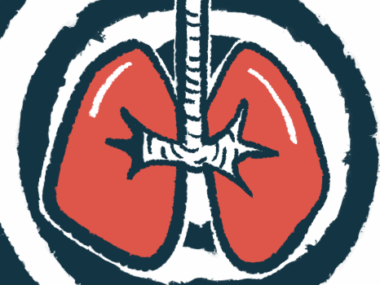High Blood-sugar Levels at Night Affect Lung Function in CF Adults
Decline in FEV1 values seen in continuous glucose monitoring study
Written by |

High blood-sugar levels at night are associated with poorer lung function in adults, but not in children, with cystic fibrosis (CF), a study has found.
During a week of continuous glucose monitoring, blood-sugar abnormalities were observed in almost all CF adults and children evaluated, even when other tests taken over the same period returned normal results.
“To our knowledge, this is the first study reporting glycemic profiles during day and night in children and adults with CF without previous diagnosis of [CF-related diabetes],” the researchers wrote. “Our results support continued screening for glucose intolerance in patients with CF.”
The study, “Glycemic indices at night measured by CGM are predictive for a lower pulmonary function in adults but not in children with cystic fibrosis,” was published in the Journal of Cystic Fibrosis.
Abnormalities in glucose metabolism are common in CF, occurring in about 40% of infants and children with this disease, and about half go on to develop CF-related diabetes (CFRD) in adulthood.
Notably, alterations in glucose metabolism are reported to associate with declines in lung function and nutritional status. Care guidelines recommend that CF patients be screened for glucose abnormalities starting at age 10.
Continuous glucose monitoring (CGM), which automatically tracks blood-sugar levels throughout the day or night, is one way of detecting these changes, but test parameters that might be most useful are not well established.
47 patients in study considered at risk for CF-related diabetes
Researchers in Belgium used CGM to evaluate blood-sugar patterns in 47 children and adults with CF but not a CFRD diagnosis, although all were considered at risk for disease-related diabetes. None were using CFTR modulators, considered a highly effective treatment.
These patients — 21 adults and 26 minors, all being followed at Ghent University Hospital’s cystic fibrosis center — underwent continuous glucose monitoring there between January 2016 and June 2019. Clinical data from the their medical records in the year before and after the CGM were also evaluated.
Per the center’s protocol, patients were offered CGM if they showed abnormalities on an oral glucose tolerance test — done to compare fasting blood-sugar levels with those shortly after consuming sugar, often as a syrupy glucose solution — or had an elevated HbA1C value, a measure of a person’s average blood-sugar level in the last three months.
About half of the 25 patients given an oral glucose tolerance test at the time of CGM showed normal glucose levels.
For continuous glucose monitoring, a sensor was inserted into patients’ abdominal fat for seven days; data from the device were downloaded and analyzed. Patients also measured their own blood-sugar levels twice a day.
Normal CGM results were defined as blood-sugar levels greater than 140 milligrams per deciliter (mg/dL) for less than 4.5% of the time, and no reading at or above 200 mg/dL.
Both children and adults showed a “deviant glycemic profile on CGM,” the researchers wrote, with 96% of patients (45 of 47 people) having an abnormal result.
Majority fail to reach normal glucose range at nighttime
Specifically, more than half of the patients (27 or 57.4%) did not reach a normal glucose range during the day (70–140 mg/dL) for at least 90% of the time, and 87.2% (41 people) didn’t reach it at night.
Among children, most measures of glucose exposure were higher during the day than at night. Among adults, none of these measures differed significantly by time of day.
Lung function was monitored with the forced expiratory volume in one second (FEV1), a measure of how much air can be forcibly exhaled in a single breath. A decline in lung function was observed between the year before and after CGM in children, whereas no significant changes during the study were seen in adults.
Lung function at the time of CGM wasn’t associated with any glucose measurements in children. But for adults, indicators of higher blood nighttime glucose levels linked with worse lung function.
Specifically, for every 1% increase in the amount of time spent with blood sugar levels over 140 mg/dL at night, a 0.77% decline in FEV1 values was observed.
“In the adult cohort an association was found between the level of [glucose expoure] at night and lower concurrent pulmonary
function,” the researchers wrote.
CGM parameters were not associated with nutritional status, as measured by the body mass index, in children or adults.
High blood-sugar levels, particularly at night, in CF patients could be in part due to their diet, the researchers suggested. To support a healthy nutritional status, patients are often advised to increase their intake of carbohydrates, fats, and proteins (macronutrients), with many patients eating a snack before bed.
“It is justified to suggest more research on the impact of macronutrient composition of foods … on glucose control in CF patients,” the researchers wrote, noting that their findings challenge “the nutritional intervention of adding a snack before bedtime to the meal plan of CF patients.”
This study “showed abnormalities of glucose homeostasis in almost all selected CF patients,” despite normal readings on tests of oral glucose tolerance and HbA1C values, the researchers wrote.
“Further research should focus on finding thresholds for specific CF outcomes related to age,” they added.






